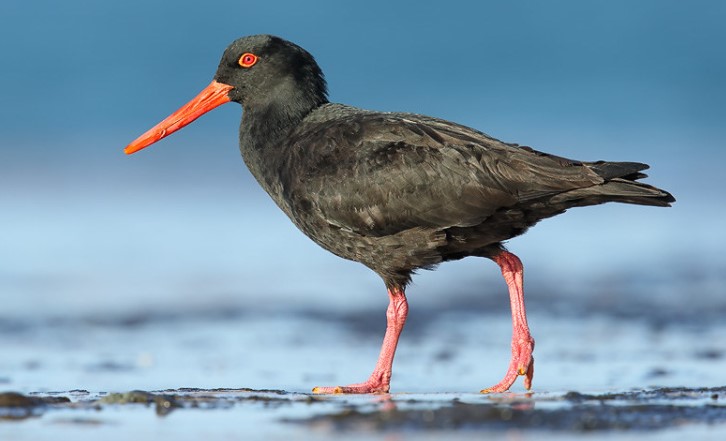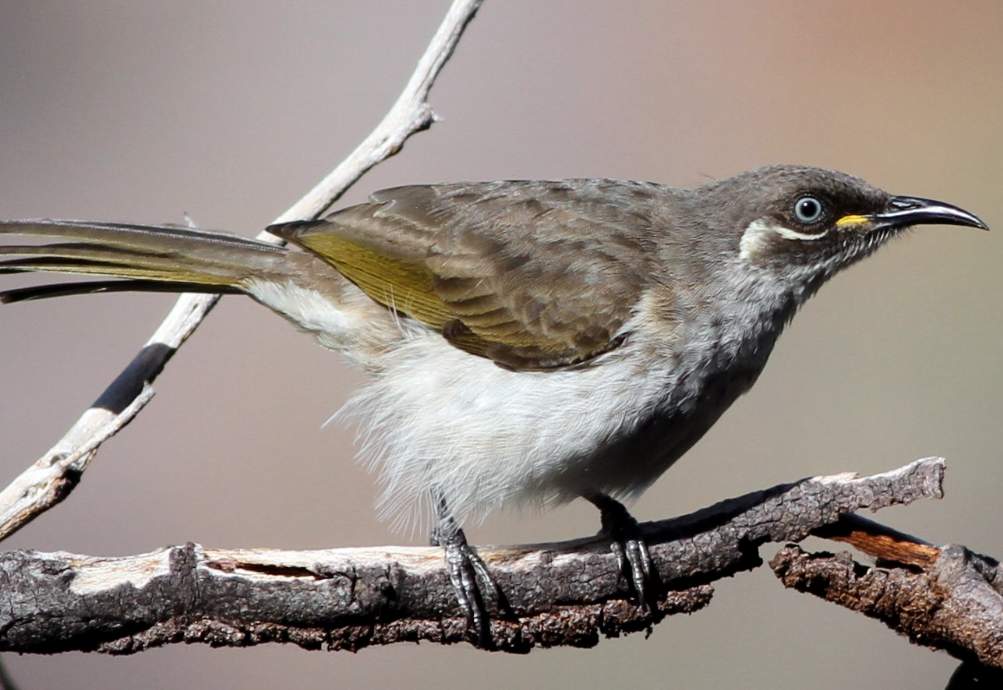A Sooty oystercatcher belongs to the oystercatcher family. It is an endemic-wading bird found along Australia’s coastline. As its name suggests, the Sooty Oystercatcher is black against a dusky background, and it frequently exposed rocky shorelines, wave-cut platforms, headlands, coral reefs, and stony beaches, replacing the Pied Oystercatcher in these locations.
Sand beaches do have it, but it occurs very rarely. There is no clear explanation for why the two species separate themselves in this way. However, this is likely a result of their preference for feeding habitats and types of food.
Limpets, periwinkles, and mussels are mainly eaten by Sooty Oystercatchers; some shells are hammered against a stone. In the same way that Pied Oystercatchers open bivalves, these birds hammer or stagger them open. There are a lot of similarities between the Sooty Oystercatcher and the Pied Oystercatcher.

When not breeding, they gather in small groups, roost and rest on rocky heads, and spread out while feeding. A distinctive piping display is also performed as part of the courtship and pairing processes. Intruders can also be diverted away from young nests by feigning death, injuring themselves, and brooding a fake egg.
As young children, they typically run to an object for cover and freeze or squat when their parents call them. While Pied Oystercatchers breed on offshore islands, Sootys typically forage on non-breeding grounds near breeding grounds. It is likely that these pairs are occupying and holding traditional territories.
Wee-ardoo and Black Redbill are other names for this species. Sooty Oystercatchers are approximately 490-520 mm long. Females are slightly larger than males, but both sexes are similar. Its plumage is sooty-black. The eyes are scarlet, and the eye-ring is orange. Orange-red is the color of the bill, and coral pink is the color of the legs and feet.
The back, belly, and flank feathers of first-year birds are gray, while the eye is brown. The bill is dusky. The legs are grey. The legs of older immatures are pale pink and their eyes are dull red.
A downy young head is brown, the back is stippled buff and lined with black, and the belly is white. Sooty Oystercatcher’s voice is loud and carries kleep or hu-eep in contact. Display calls are sometimes piped.
Nesting and breeding take place between August and January. Above the high-water mark, the Sooty Oystercatcher built a shallow nest in the sand. A nest may be found in a cleft in a rock that may be built up by pebbles, shells, or seaweed. Two to four olive-grey eggs are laid (usually two), suffused with dark brown and purple spots. A typical egg’s shape is oval, about 64 x 43 millimeters in size. Both sexes incubate for about 25-27 days.
The species is mostly found near rocky shores, beaches, and estuaries; offshore islands and rocky islets are also common. There are two types of races. One is roughly south of the Tropic of Capricorn, and the other is north, with an enlarged fleshy red eye-ring. The sooty oystercatcher was described by John Gould in 1845. The Latin adjective fuliginosus, “sooty”, is used to describe the species.







